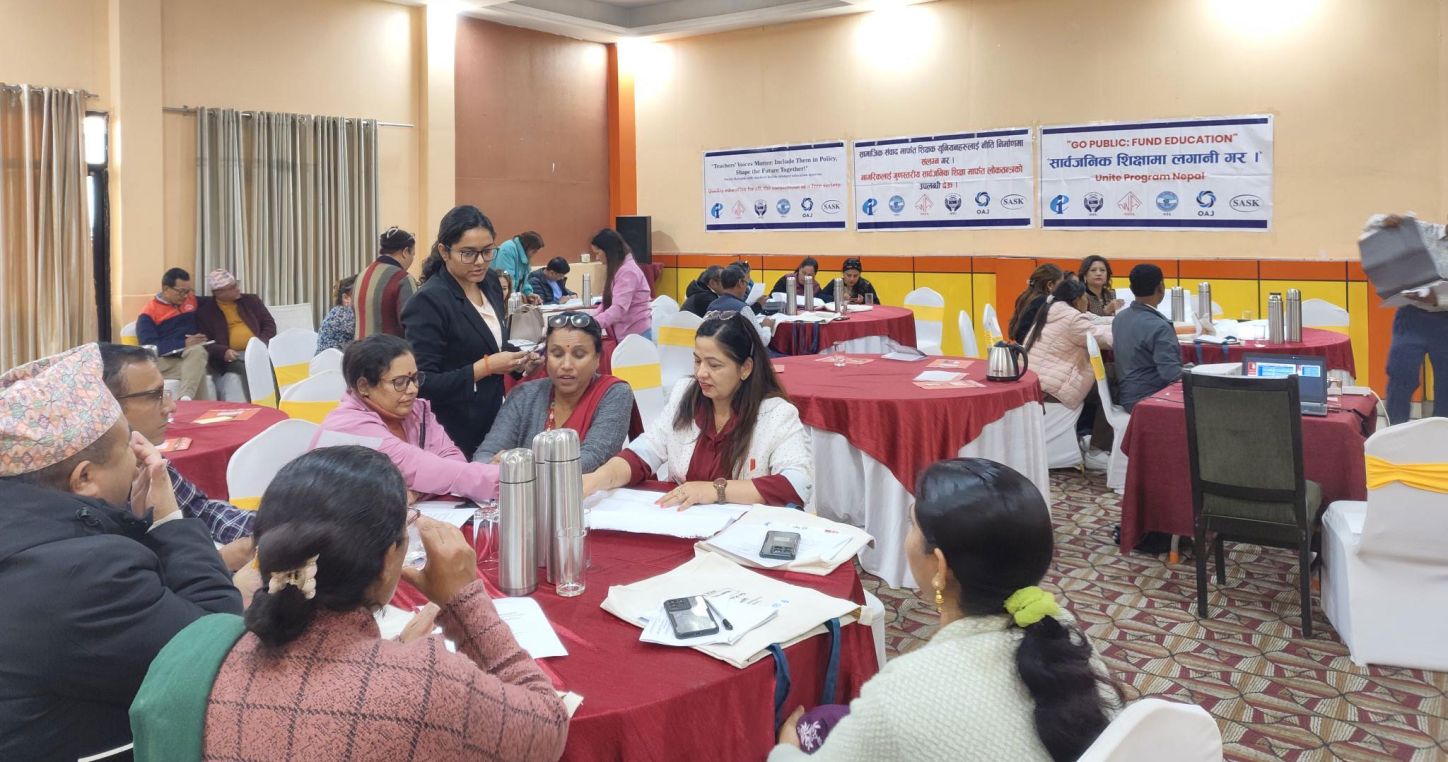U.S. Fertility Rate Falls to Lowest on Record – Again – Focus on the Family

U.S. Fertility Rate Trends and Implications for Sustainable Development Goals
A 2024 report from the Centers for Disease Control and Prevention (CDC) indicates that the total fertility rate in the United States has fallen to a historic low. This demographic shift has profound implications for the nation’s progress toward several key Sustainable Development Goals (SDGs), particularly those related to economic growth, health, gender equality, and sustainable communities.
Analysis of 2024 Fertility Data
Key Statistical Findings
The final 2024 data reveals a continued downward trend in U.S. fertility, raising concerns about long-term demographic sustainability.
- Total Fertility Rate (TFR): The TFR fell to 1.599 births per woman, a decrease from 1.621 in 2023 and significantly below the replacement rate of approximately 2.1 births per woman.
- General Fertility Rate: The number of births per 1,000 women aged 15-44 declined by 1% to 53.8.
- Total Births: Despite the falling rate, the absolute number of births saw a marginal 1% increase to 3,628,934.
Interlinkages with Sustainable Development Goals (SDGs)
The declining fertility rate is intrinsically linked to progress and challenges across the 2030 Agenda for Sustainable Development.
SDG 8: Decent Work and Economic Growth
A sustained sub-replacement fertility rate presents a direct challenge to long-term economic stability. A shrinking future workforce could impede economic growth, reduce the tax base, and strain social security and healthcare systems designed to support an aging population. This demographic pressure complicates the achievement of sustained, inclusive, and sustainable economic growth.
SDG 3: Good Health and Well-being & SDG 5: Gender Equality
The trend of delaying childbirth is closely associated with advancements in gender equality and health.
- Educational and Career Opportunities (SDG 5): Increased participation of women in higher education and the workforce is a primary driver of delayed family formation. While this signifies progress towards gender equality (Target 5.5), it also correlates with lower overall fertility rates.
- Family Planning and Reproductive Health (SDG 3): The decision to delay or limit childbearing reflects greater autonomy and access to family planning services, aligning with Target 3.7 (ensure universal access to sexual and reproductive health-care services).
SDG 10: Reduced Inequalities & SDG 11: Sustainable Cities and Communities
Demographic shifts require adaptive policies to prevent increased inequality and ensure community sustainability. An aging population places greater demand on public services, healthcare, and social infrastructure. Without proactive planning, these pressures could exacerbate inequalities and challenge the resilience of communities (Target 11.1).
Causal Factors and Future Projections
Primary Drivers of Fertility Decline
Research points to several interconnected societal trends contributing to the decline in fertility.
- Delayed Marriage and Childbearing: Women are increasingly delaying marriage and childbirth until later in life. Data indicates that women who marry after age 30 tend to have fewer children than those who marry in their early 20s.
- Generational Shifts: The birth rate among millennials has been notably low, with many women in this cohort opting to delay or forgo having children in their twenties. This pattern suggests that subsequent generations will be smaller.
- Socioeconomic Factors: Economic considerations, career development priorities, and changing cultural norms regarding family formation are significant factors influencing fertility decisions.
Long-Term Outlook
The persistent decline suggests that the U.S. is on a trajectory where deaths may eventually outnumber births, leading to a natural population decrease. This outlook underscores the urgency for strategic planning to mitigate the associated economic and social challenges and ensure long-term sustainable development.
Analysis of Sustainable Development Goals (SDGs) in the Article
1. Which SDGs are addressed or connected to the issues highlighted in the article?
The article on the declining U.S. fertility rate connects to several Sustainable Development Goals (SDGs) by discussing population dynamics, health trends, and their societal and economic implications.
- SDG 3: Good Health and Well-being: This is the most directly relevant SDG. The article’s entire focus is on fertility rates, birth rates, and population trends, which are key components of reproductive health and public health monitoring.
- SDG 8: Decent Work and Economic Growth: The article explicitly raises “concerns for our nation’s economic and societal future” due to the declining fertility rate. A shrinking population can lead to a smaller workforce, impacting economic productivity, consumption, and long-term growth.
- SDG 16: Peace, Justice and Strong Institutions: The article links fertility rates to declining marriage rates and family formation. Strong families are often considered a foundational institution for a stable society. The data on births relies on strong civil registration institutions.
- SDG 5: Gender Equality: While the article’s perspective is on promoting marriage and childbearing, the underlying topic involves women’s life choices about family, career, and the timing of having children. The article notes, “As women choose to delay having children, they become less likely to ever have children,” which touches upon women’s autonomy and decision-making in their personal lives.
2. What specific targets under those SDGs can be identified based on the article’s content?
Based on the SDGs identified, the following specific targets are relevant to the article’s content:
- Target 3.7: “By 2030, ensure universal access to sexual and reproductive health-care services, including for family planning, information and education, and the integration of reproductive health into national strategies and programmes.” The article’s discussion of fertility and birth rates is central to monitoring reproductive health trends within a nation.
- Target 8.5 (Implied): “By 2030, achieve full and productive employment and decent work for all women and men…” The article’s concern about the future economy due to a shrinking workforce directly relates to the sustainability of labor markets and economic productivity, which are core to this target. The “shrinking size of following generations” is presented as a threat to future economic stability.
- Target 16.9: “By 2030, provide legal identity for all, including birth registration.” The article’s ability to cite precise data, such as “there were 3,628,934 births in the United States in 2024,” is entirely dependent on a comprehensive and effective birth registration system, which is the focus of this target.
3. Are there any indicators mentioned or implied in the article that can be used to measure progress towards the identified targets?
Yes, the article explicitly mentions several key indicators that are used to measure progress towards the identified targets.
-
For Target 3.7:
- Total Fertility Rate: The article’s central statistic is the total fertility rate, which it states “fell to its lowest level on record in 2024 with fewer than 1.6 children being born per woman” and specifies the drop from “1.621 births per woman” in 2023 to “just 1.599 in 2024.” This is a primary indicator of reproductive health and population trends.
- General Fertility Rate: The article provides a precise figure for this indicator, which is closely related to the official SDG indicator 3.7.2 (Adolescent birth rate). It states the “general fertility rate (number of births per 1,000 females ages 15-44) declined 1% to 53.8 in 2024 from 54.5 in 2023.”
-
For Target 16.9:
- Total Number of Registered Births: The article mentions that “there were 3,628,934 births in the United States in 2024.” This absolute number is a direct output of the civil registration system (Indicator 16.9.1), implying a high rate of birth registration.
-
Implied Social Indicators:
- Marriage Rates and Age of First Marriage: The article repeatedly links declining fertility to social trends, stating, “as marriage rates have declined, and as there’s been a corresponding increase in the average age of first marriage, the fertility rate has declined too.” These serve as implied indicators for understanding the social context of the demographic changes discussed.
4. Table of SDGs, Targets, and Indicators
| SDGs | Targets | Indicators Identified in the Article |
|---|---|---|
| SDG 3: Good Health and Well-being | Target 3.7: Ensure universal access to sexual and reproductive health-care services. |
|
| SDG 8: Decent Work and Economic Growth | Target 8.5 (Implied): Achieve full and productive employment and decent work for all. |
|
| SDG 16: Peace, Justice and Strong Institutions | Target 16.9: Provide legal identity for all, including birth registration. |
|
Source: dailycitizen.focusonthefamily.com

What is Your Reaction?
 Like
0
Like
0
 Dislike
0
Dislike
0
 Love
0
Love
0
 Funny
0
Funny
0
 Angry
0
Angry
0
 Sad
0
Sad
0
 Wow
0
Wow
0












































































